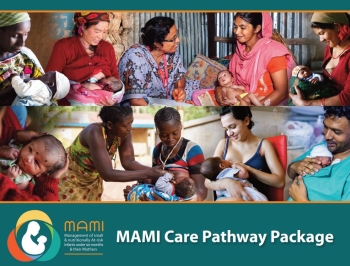Key considerations for developing patient management tools for small and nutritionally at-risk infants: A scoping review
Abstract
Background: To improve global child health, efficacious interventions are important but real-world effectiveness is crucial; this requires translating technical guidance into frontline clinical and patient care practices. Patient management ‘tools’ are frequently used for this purpose, guiding healthcare workers to deliver quality care. Ahead of an update to a patient management tool for small and nutritionally at-risk infants under six months of age (C-MAMI Tool, V2), we reviewed how others have done this in the past. Our aim was to ensure an evidence-based development process to optimise future success and impact.
Methods: We investigated five patient management tools: Integrated Care Pathways (ICPs), Integrated Management of Childhood Illness (IMCI), Paediatric Early Warning Systems (PEWS), Growth Monitoring (GM), and Emergency Triage Assessment and Treatment (ETAT). Searches were run in PubMed and examined evidence on the development, uptake, and effectiveness of these tools.
Results: The tools were developed between approximately 1960-2005, with ongoing development of electronic patient management tools (e-tools). IMCI and ETAT were the most widely used in low- and middle-income countries (LMICs), but low coverage remains a major barrier to effectiveness. Growth monitoring is also widely used in LMICs but lacks strong evidence of effectiveness. Evidence on the use of e-tools for patient management in LMICs is growing. Whilst overall evidence for all these approaches was limited, the strongest evidence of effectiveness was for ICPs. Though evidence was sparse, formative work developing the tools prior to implementation seems important to their future success.
Conclusions: Informed by this review, the C-MAMI Tool was updated to the MAMI Care Pathway Package, using an ICP approach and modelled on IMCI. This living resource continues to evolve: aligning with and accounting for existing pathways and systems; baseline formative user-experience research; formal effectiveness research to actively plan for future scale up; collecting information on variance from and adaptations to the care pathway; possible future e-tools. An ICP approach is relevant to other child health and nutrition topics.

Authors retain all copyrights. In making a submission to World Nutrition, they are certifying that all material is theirs except quotations, as indicated, and that they have obtained permission for any photos, tables, or graphics taken from other publications or websites.




